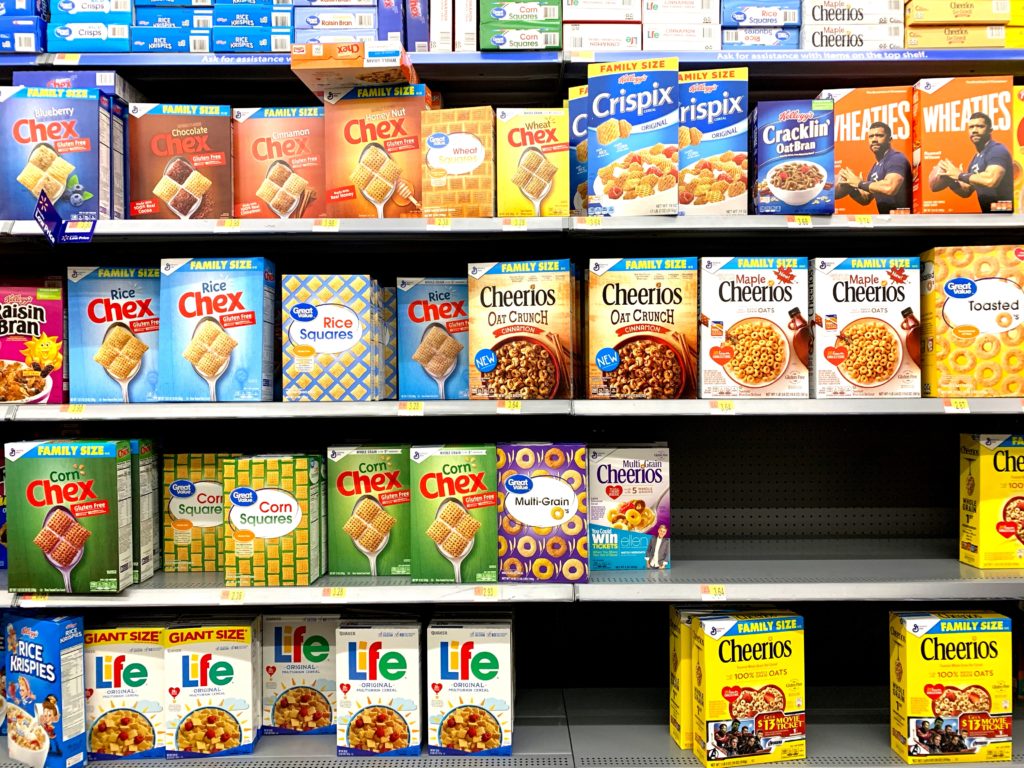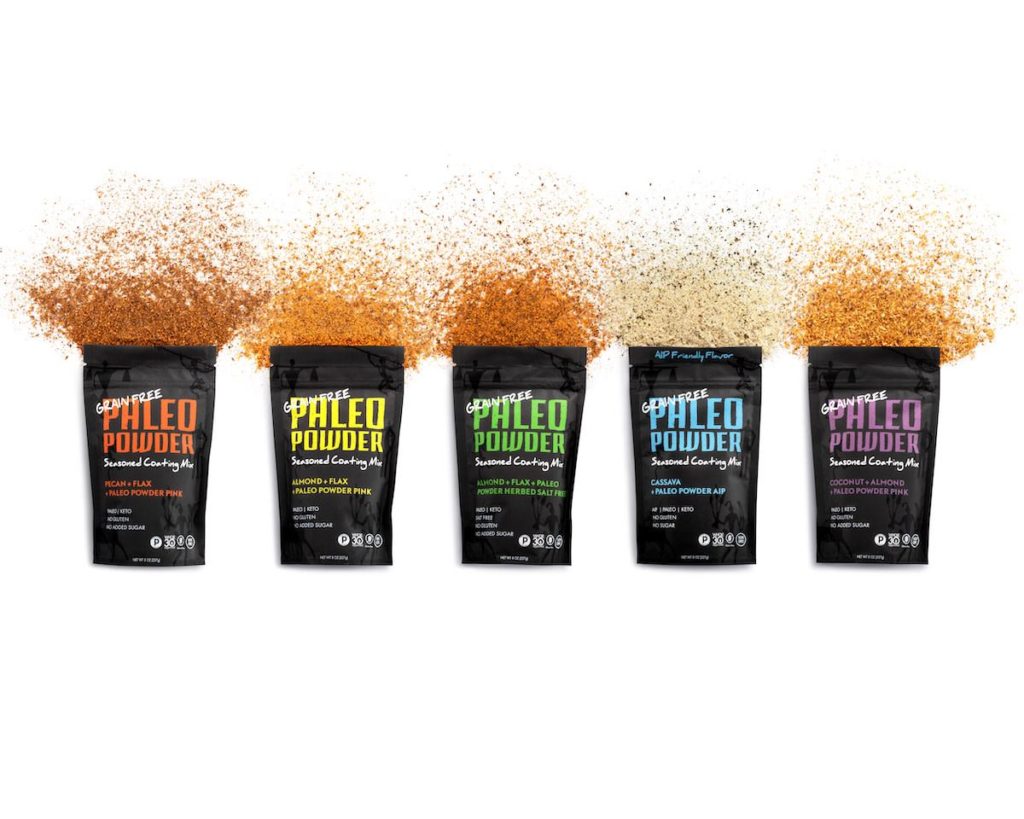Within the consumer-packaged goods (CPG) space, many brands today resonate with “team rigid” while others are all about “team flexible.” But the truth is, there is no one-size-fits-all solution – both package structures have benefits depending on the type of product being packaged, or how it will be used. So, what is rigid and flexible packaging?
Key Differences Between Flexible Packaging and Rigid Packaging
Rigid packaging means basically just that. It is defined as “unable to bend or be forced out of shape; not flexible.” Rigid packaging offers structure and support for products and is known for its strength. Examples of rigid packaging materials include corrugated and paperboard boxes, plastic bottles and boxes, aluminum cans, and glass jars. Popular applications include cereal boxes, glass bottles of spirits, cans of soup, and laundry detergent bottles.

Flexible packaging on the other hand, is literally flexible. It is defined as, “capable of bending easily without breaking” so you can bend it, fold it, and shape it. This includes pouches and bags used for a variety of products, including juice pouches, chip bags, pouches of granola and protein bar wrappers. The great thing about flexible packaging is that it is available in various sizes and forms to work with just about any application.
So then, the burning question: which do you choose? What type of products are best for rigid, and which are best for flexible?
Understanding Flexible Packaging
Today more than ever, there is a big shift in the packaging landscape as more CPG brands opt for flexible packaging for their products that once were ruled by rigid containers.
When Daisy launched its sour cream in an inverted squeeze pouch, it showcased a big shift from the traditional plastic tub. Now, there is a similar pouch for many ketchups, jellies, and honey that allows users to squeeze product out like a tube of toothpaste, and even roll it down to get out the last bit that tends to get stuck in the bottom.
Another example is Campbell’s popular line-up of soups and sauces in pouches instead of traditional aluminum cans and glass jars. Many baby food companies have followed suit, trading in their glass jars for stand-up pouches. Even nuts, cereal, and granola are moving to flexible. And outside of the food industry, there has been a shift to flexible for household products, lawn and garden, and even nutritional supplements. Things like hand soap refill containers, motor oil, and protein blends now come packaged in stand-up pouches.
Brands of all sizes, and in all markets, are ditching the glass and plastic, and packaging their powders in flexible packaging materials, such as portable, unbreakable, lightweight pouches that are easier for consumers to handle.

The flexible packaging market is growing, and growing fast. In fact, according to the Flexible Packaging Association (FPA), it is the second largest packaging segment in the U.S., garnering about 19% of the $170 billion U.S. packaging market. There are a few reasons for this industry shift, including how consumers interact with products, the cost savings associated with utilizing flexible packaging, and the environmental implications of rigid packaging, according to the Packaging Distributors of America (PDA).
“The switch to flexible packaging benefits manufacturers by reducing weight and costs in warehousing and shipping, reducing energy during production, and enhancements in sustainability; retailers by reducing weight/size and increasing shelf space, improved graphics to attract customer attention, and improved shelf life; and customers by offering convenient features that weren’t available in cans and jars, as well as improved taste in food products,” reports the PDA.
Plus, a growing concern over BPA (bisphenol A) is pushing more people to move away from certain plastics and aluminum, and in some cases explore packaging products in pouches.
Understanding Rigid Packaging
While many brands are moving to flexible packaging, it’s important to note that the rigid packaging market is currently larger than the flexible market. The PDA reports that the global rigid packaging market is set to cross $800 billion by 2024, while the flexible packaging market is predicted to reach $299 billion by 2024. Rigid will always have a strong place in the CPG space, because there are many applications where it just makes sense. High-end beverages, spirits, perfume, as well as specific beauty and health products that require an aerosol can, for example, will likely remain in rigid containers. These products require rigid protection and, in some cases, it comes down to consumer preference. For items like perfumes and spirits, for example, glass may signal a higher perceived value over other forms of packaging.
The beverage industry in general mainly consists of rigid containers, from glass bottles for specialty beverages and alcohol, to plastic bottles for water, and the popular aluminum can for beer, sparkling water, and soda. The aluminum can is not a packaging format that can be easily ignored. According to Zion Market Research, the global aluminum cans market was roughly $39.41 billion in 2018 and is expected to generate around $48.15 billion by 2025.
Strength and Durability
The fact is, both flexible and rigid has its benefits. It really depends on what you’re packaging and how it will be used. Rigid containers in general offer better protection for the product inside, since the container itself offers structure and support. These containers are considered stronger and come with a heavier weight. The downside to this though is that glass can break when dropped, and cans and bottles can become dented.
On the other hand, flexible packaging is considered shatterproof, but can potentially be punctured with a sharp object, depending on the structure. Yet, quality flexible packaging today offers excellent barrier protection to protect the contents inside from heat, odours, oxygen, and light. This aids in reducing spoilage, which results in less food waste.
What About the Environment?
As far as the environment goes, there is a lot to consider when looking at rigid versus flexible packaging. According to the FPA, “When you consider the full life cycle of packaging materials, in most cases, flexible packaging requires less energy to manufacture and transport, reduces product waste, and sends less material to landfills.”

Consider that when transporting packaging, flexible weighs considerably less than rigid, which means you can ship more in each truckload, making fewer runs, using less gas and reducing CO2 emissions. The light weight also lends a hand to source reduction, since the package uses less materials overall, thus reducing waste.
While in some cases, rigid packaging may be considered simpler to recycle, there is a big industry push to create more recyclable pouches to address this concern. The FPA reports that “about 50% of flexible plastics are easily recyclable through in-store drop-off programs, while the other half can be chemically recycled or used as energy feedstock.” However, most rigid containers are recyclable now and many customers are already familiar with recycling these types of containers.
Consumer Preference
Many consumers prefer the convenience of flexible and manufacturers enjoy the cost savings and environmental benefits of flexible. They are lighter in weight than their rigid counterparts, thus easier to handle, carry, and store. Plus, many are easy to open and stand up for easy snacking, pouring, and serving. Add to it that many of these containers come equipped with convenient reclose options to make the packaging resealable for convenience and extended product freshness. Pouches come in various sizes and shapes for a variety of applications and allow for high-impact graphics. Many industries, from food to household products, are getting adventurous and trying out flexible after previously selling their products in rigid containers.
As you create the right package for your brand, know that you have options and there are various solutions that may work for you. Need help getting started? Give us a call and we can help answer any questions you have as you explore launching your product in a flexible package.
